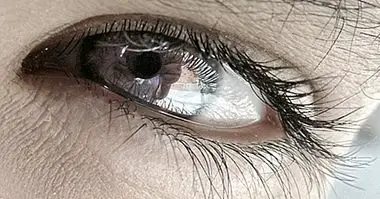The 15 types of attitudes, and how they define us
There are numerous factors that can alter the success or failure of an action. And it is that although we have the real possibility of achieving it, it is not the same to do something as to do it well: our willingness to do so affects the motivation and achievement, degree or even perception of the task or situation.
We are not talking about something that is either A or B, but rather there are a lot of types of attitudes , because this is what we are talking about, what they can have about it.
- Related article: "The 16 types of feelings and their psychological function"
What are attitudes?
Before entering to evaluate different types of attitudes, it is necessary to take into account what we can consider attitude in itself.
In this sense, it receives the name of attitude to the effect of the set of beliefs and values relatively stable over time in the disposition or tendency to act in a certain way or to undertake some type of action. Is about a determining aspect when carrying out an action and the type of emotion that generates this activity or way of interacting with a specific situation or stimulus.
An attitude can be more or less widespread, being able to refer to a large area or even a specific type of stimulus (is what happens for example with ethnic or racial prejudices).
The attitude towards the world arises from the interaction between biological and hereditary factors (as well as the aptitudes or personality traits, part of them are favored by the genetics of each subject) and environmental factors such as learning along the life of the subject.
Also, they can be actively modified through training or mere exposure to the topic that generates the attitude, for example associating the activity in question with positive or negative reinforcers based on experience.
Attitude functions
The presence of a certain attitude has four basic functions, as proposed by Katz in 1960.
In the first place they have a utilitarian or instrumental function, in the sense that they allow us to undertake and approach the fulfillment of the goals of those who have them.
Another of its functions is that of knowledge, since they allow both process how to even selectively perceive the available information in the environment.
The third of the basic functions of attitudes is the expression of values, allowing to show the beliefs behind the performance itself.
Finally and linked to the previous highlights the role of self-defense, linked to the preservation of self-esteem and self-confidence by allowing the self-affirmation and self-justification of the acts themselves.
The types of attitudes
It is possible to find a wide variety of types of attitudes , classified according to various criteria and without being mutually exclusive. Among them we can observe the following.
1. According to its affective valence
One of the possible ways of classifying emotions is through their affective valence, in the sense of how they allow us to assess the environment and the situation. We can find the following three types of attitudes.
1.1. Positive attitude
One of the most favorable types of attitude is the positive attitude, through which the situation or exposure to a stimulus is visualized in a way that favors positive and optimistic interpretation regardless of whether difficulties are faced, bringing the subject closer to stimulation or action already the pursuit of achieving goals in a healthy way , confident and generally disciplined. It is usually contagious.
1.2. Negative attitude
Type of attitude that generates a negative and pessimistic view of reality, generally maximizing the aversive experience and giving little value or directly not seeing the positive aspects of the situation. It usually generates an avoidance of acting or a complaining behavior beyond the rational , making it difficult to achieve goals. Like the positive one, it is usually contagious.
1.3. Neutral attitude
We can consider as a neutral attitude one in which the judgment and the thought is not colored by an emotionality neither positive nor negative. Is about one of the less frequent types of attitude and usually belongs to people who claim to be impartial in their judgments.
2. Classification according to your activity orientation
Another type of classification, not incompatible with the previous one, refers to the way in which the individual dispositions generate a concrete approach or orientation towards the idea of carrying out a behavior or activity. In this sense and we can highlight the following.
2.1. Proactive attitude
A type of attitude in which the action is prioritized and the autonomous and active search for an improvement in the performance or performance of the activity or an autonomous search for the solution of problems that may arise.It is a kind of mentality that promotes creativity and the generation of added value , as well as the pursuit of the achievement of the present objectives and even looking for new challenges to achieve after that. It is highly valued in the labor market.
2.2. Reactive attitude
This type of attitude is also linked to the performance and implementation of behavior, but with a more passive mentality and dependent on the established. A reactive person will depend to a great extent on instructions and resources and will have more difficulties to face unforeseen problems, not being autonomous. Predisposes to conformism and non-action if there is nothing that forces her.
3. Classification according to the motivation to act
Other types of attitudes that can be considered arise not so much from how we are oriented towards the activity but what motivates us to do so. In this sense we can find the following types of attitudes.
3.1. Interested attitude
This type of attitude implies that what you are looking for in your action is achieving their own individual goals , not taking into account or valuing the needs of others very little.
The benefit itself is sought, either directly or indirectly and may be more or less obvious. You can also seek the benefit of others, but you must always report some kind of personal benefit (even if it is at the level of social consideration). Promotes another type of attitude that we will see later, the manipulative .
3.2. Selfless / altruistic attitude
The subject with this type of attitude carries out its acts with the purpose of generating a benefit for others or independently of that it may not generate profits or even that it may cause losses. It is unusual, because most actions generate secondary benefits to the subject itself even at the psychic level.
- You may be interested: "Altruism: development of the prosocial self in children"
4. Depending on the relationship with others
In addition to the objectives themselves, attitudes can also be classified according to how they interact with others.
4.1. Collaborating / integrating attitude
A kind of attitude of great use, promotes interaction with others so that everyone can achieve their goals and achieve their goals both shared and individual.
4.2. Manipulative attitude
This type of attitude is the one that has someone who voluntarily and consciously uses others, reifying them in order to obtain their own objectives, favor their interests or direct the situation to a desired point for them.
4.3. Passive attitude
It is a type of attitude derived from a negative view of reality, in which it is presented an absence of initiative and activity , not seeking the approach to action but its avoidance. On a personal level they can subordinate their wishes to those of others, being dependent and not defending their rights.
4.4. Aggressive attitude
A way of acting and taking situations in such a way that they defend their own rights independently of those of others, coming to ignore them or underestimate them if they are contrary to those of the subject.
- Related article: "The 4 main theories of aggression: how is aggression explained?"
4.5. Assertive attitude
A type of attitude in which the subject defend their own opinions and rights consistently, but respecting those of others and being flexible in such a way that the other is respected and space is given for negotiation.
4.6. Permissive attitude
This type of attitude is largely linked to the propensity to be extremely flexible, allowing and valuing deviations from the norm .
5. According to the type of elements that are used to assess the stimuli
Another type of attitude is linked to our way of processing reality or the type of aspects that are used to assess each situation.
5.1. Emotional / emotional attitude
The emotional or emotional attitude is what those who have tend to be based on the emotional and to value one's own and others' affections. They tend to be more generous, romantic and affective both in their interactions and when assessing situations (sometimes even contrary to rationality).
5.2. Rational attitude
They have people who rely on the use of logic and reason when assessing reality, often ignoring irrational or emotional aspects.
Bibliographic references:
- Gerd Bohner 2002. Attitudes and Attitude Change: Social Psychology. Psychology Press.
- Icek Ajzen. 2005. Attitudes, Personality, and Behavior. McGraw-Hill International.
- Young, K; J.C. Flügel. "Psychology of attitudes". Paidós SA.



















